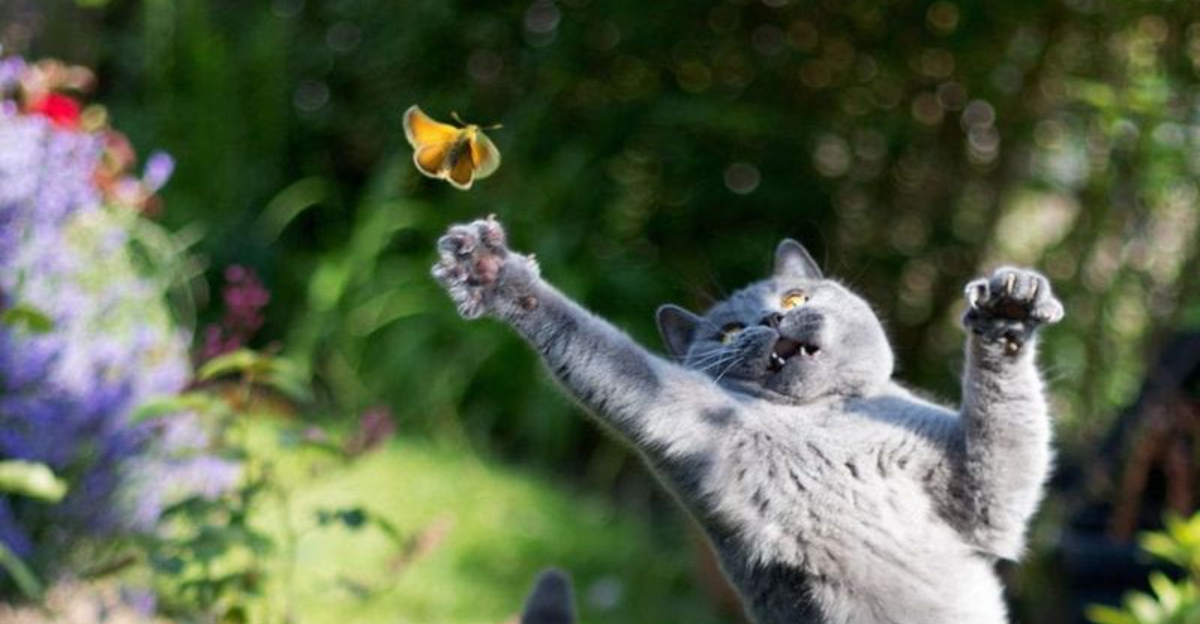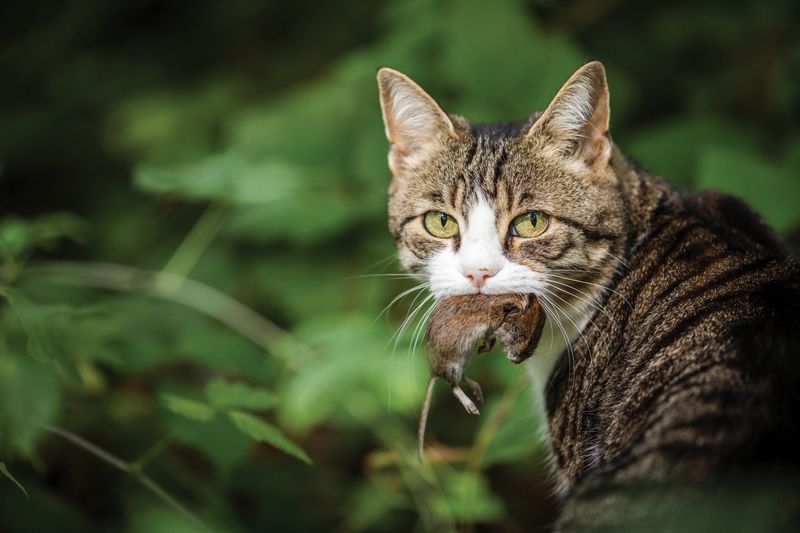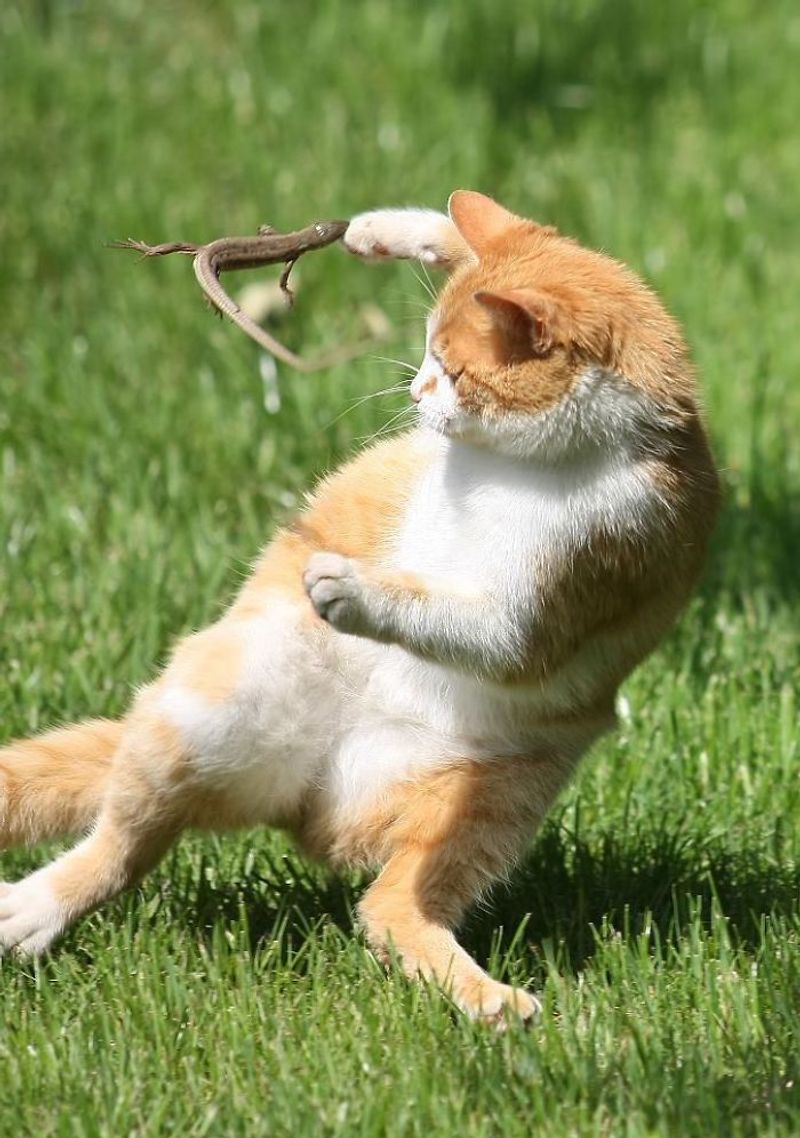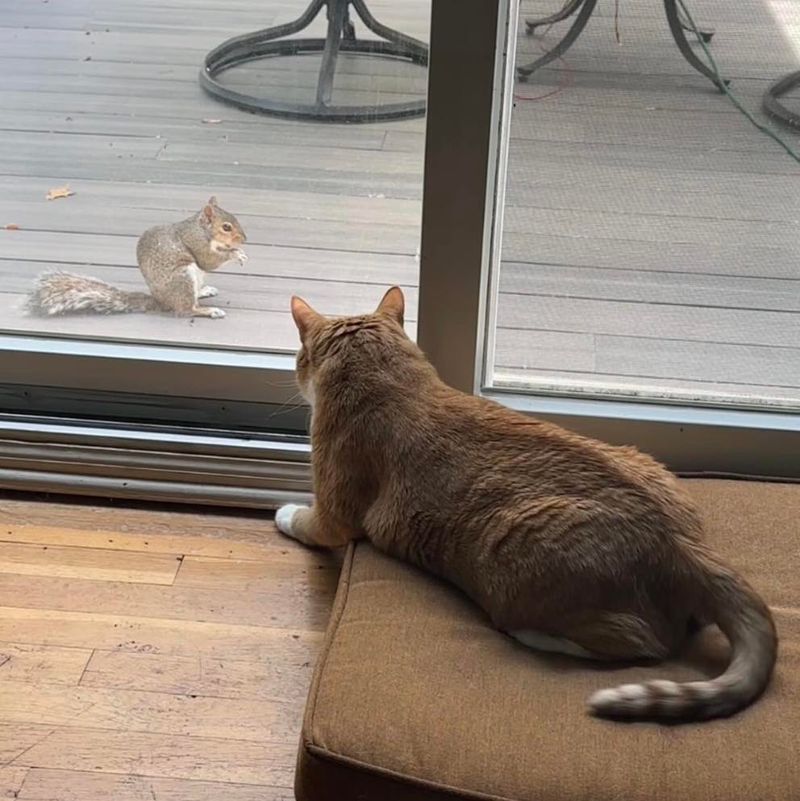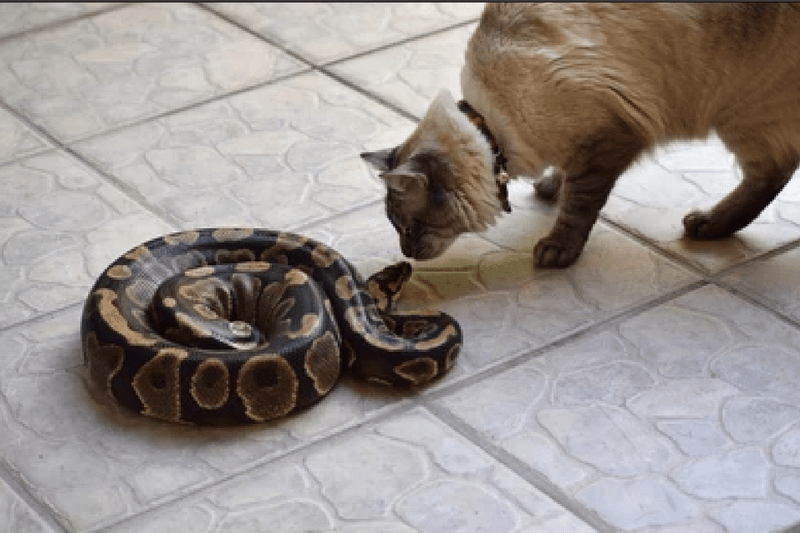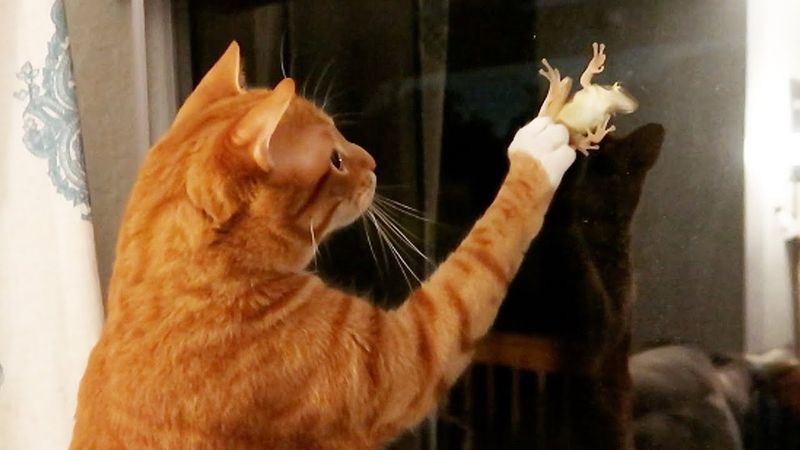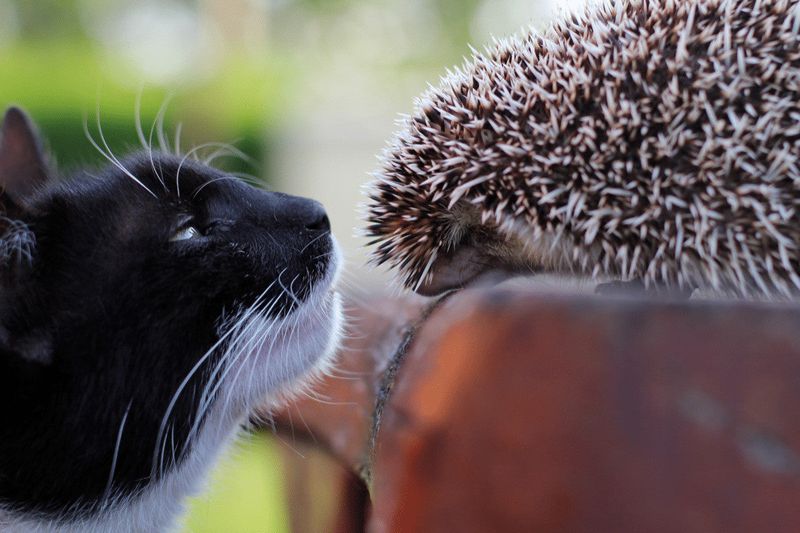📖 Table of Content:
A fluffy house cat may appear relaxed and indifferent, often found lounging in the coziest spots. Beneath this calm exterior lies a powerful instinct inherited from wild ancestors. When the right stimuli appear, that peaceful facade disappears in an instant.
Focused eyes sharpen, tails twitch, and muscles tense as primal hunting instincts awaken. These deeply ingrained behaviors have endured through thousands of years of domestication. The sudden shift from calm companion to fierce predator is both fascinating and natural.
Certain creatures act as triggers, sparking this ancient hunting drive. Even the most domesticated cats respond instinctively to movement and sound that mimic prey. Recognizing these triggers can reveal just how wild a house cat’s nature truly remains.
1. Mice
The classic cat-and-mouse scenario exists for good reason. A mouse’s quick, darting movements trigger your cat’s predatory circuit immediately. The high-pitched squeaks and scurrying sounds alert your cat’s sensitive ears, while the distinctive musky scent drives them wild.
Cats instinctively know mice are both prey and potential competitors for food. Many felines will spend hours silently watching a mouse hole, demonstrating patience that would impress even the most disciplined hunter.
Most cats don’t need training to hunt mice – the behavior is hardwired into their DNA from their ancestors who survived by catching these small rodents.
2. Birds
Nothing activates your cat’s predator mode faster than birds. The fluttering movements, chirping sounds, and quick flight patterns trigger an immediate hunting response. Your normally lazy feline will instantly transform, chattering teeth and all.
Cats have specialized vision that excels at detecting the slightest movements, making birds the perfect visual stimulus. The predatory sequence begins with intense focus, followed by the famous butt-wiggle that precedes pouncing.
Bird hunting is so instinctual that even well-fed indoor cats spend hours watching through windows, practicing what behaviorists call ‘vacuum activities’ – hunting behaviors without actual prey.
3. Insects
Flying insects transform your lazy housecat into an acrobatic marvel within seconds. Moths, flies, and beetles trigger lightning-fast paw swipes and impressive vertical jumps as your cat’s hunting instincts take over. Those erratic flight patterns are irresistible to feline predators.
Cats can track insects with remarkable precision, using their whiskers to detect even the slightest air movements. The rapid, unpredictable movements of bugs trigger your cat’s predatory sequence: stalk, chase, pounce, and capture.
Bug hunting provides crucial mental stimulation for indoor cats. Many veterinarians recommend supervised insect hunting as enrichment for cats who lack outdoor hunting opportunities.
4. Lizards
Reptiles awaken primal hunting instincts in domestic cats. The distinctive side-to-side movement of lizards triggers an immediate predatory response in even the laziest house cat. Their cold-blooded nature makes them difficult for cats to detect by body heat, creating an intriguing challenge.
Cats become utterly focused when stalking lizards, employing slow, calculated movements followed by explosive pounces. The hunt often involves patient waiting as cats track lizards to their hiding spots.
Lizard hunting engages all your cat’s senses – from vision tracking movement to whiskers detecting air disturbances as the reptile scurries across surfaces. This multi-sensory experience makes lizard hunting particularly stimulating.
5. Spiders
Spiders activate lightning-fast reflexes in domestic cats. Their eight-legged movement pattern creates an irresistible visual trigger that cats find impossible to ignore. One glimpse of a scurrying spider can transform your lounging pet into a focused hunter.
Cats track spiders with remarkable precision, using their sensitive whiskers to detect the slightest movements across surfaces. The hunt typically involves intense staring followed by precise paw strikes designed to trap rather than immediately kill.
Spider hunting engages your cat’s problem-solving abilities as they figure out how to reach prey in corners or ceiling areas. This mental challenge explains why cats remain fixated on spiders long after other prey might be abandoned.
6. Squirrels
The erratic darting of squirrels, combined with their bushy tails, sets cats’ predatory instincts on fire. Their unique stop-start sprinting hooks a cat’s focus like nothing else. Staring out the window, cats often chatter their teeth—a telltale sign of their fierce frustration at unreachable prey.
The challenge of catching these agile rodents makes them particularly enticing targets. Cats will spend hours in silent observation, calculating the perfect ambush strategy.
Squirrel hunting engages your cat’s problem-solving abilities as they work out timing and trajectory for potential pounces. Even indoor cats display hunting behaviors when watching squirrels, showing how deeply ingrained these instincts remain.
7. Rabbits
The moment a rabbit bounds into sight, a cat’s inner hunter awakens with fierce intensity. The rapid, zigzagging motions of rabbits spark a wild predatory response. Amid the garden’s lush foliage, cats often launch a sudden, swift attack to capture the oblivious prey.
Rabbits present a challenge due to their speed and agility. A cat must be both stealthy and swift to outsmart this quick-footed prey. Onlookers might witness a playful chase, but in the feline world, it’s a battle of wits and reflexes.
These encounters can sometimes end in friendship, as both creatures are known for their playful natures.
8. Snakes
In the wild, snakes present both a threat and a thrilling challenge to cats. The slithering motion captivates a cat’s attention, sparking its natural predatory instincts. When a cat encounters a snake, it approaches with measured caution, every muscle poised for action.
The snake, aware of the feline’s presence, often freezes, creating a tense standoff. For the cat, this confrontation is about strategy and timing. A successful pounce requires precision and nerve.
Interestingly, some cats develop a fascination with snakes, engaging in repeated encounters, each time refining their hunting techniques.
9. Frogs
Frogs may appear to be harmless, but to a cat, they represent an alluring challenge. The sudden leaps and unpredictable movements of frogs trigger a cat’s hunting drive. By a tranquil pond, a cat might watch intently, calculating the perfect moment to strike.
The frog, unassuming yet agile, often manages to evade the cat’s grasp, initiating a captivating game of catch. Each leap and bound is met with a swift, silent pursuit.
For some cats, frogs are more than prey; they are a source of endless fascination, inspiring countless hours of interactive play.
10. Hedgehogs
For domestic cats, hedgehogs are unusual and intriguing targets. The cat typically balances curiosity with caution upon encountering the spiny animal. The hedgehog’s prickly armor serves as both a deterrent and a stimulus for further exploration.
In a flower-filled garden, a cat might circle the hedgehog, trying to decipher this spiky puzzle. The hedgehog, in turn, might curl up defensively, turning the encounter into a fascinating dance of exploration.
Despite their differences, these two creatures can coexist peacefully, often leading to unexpected camaraderie.
